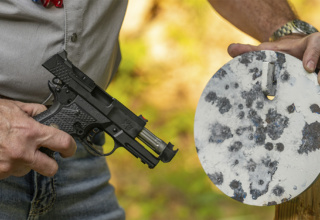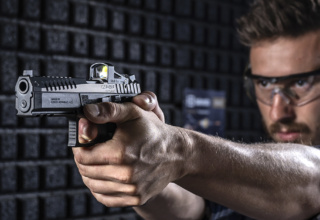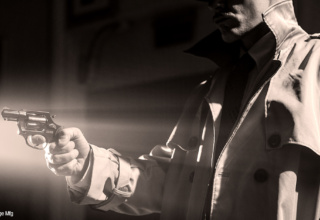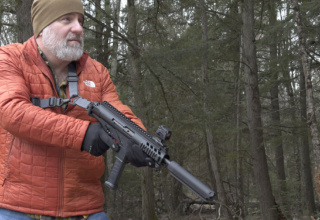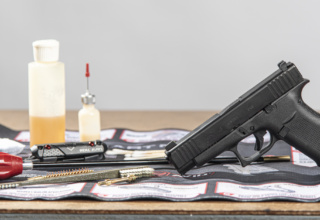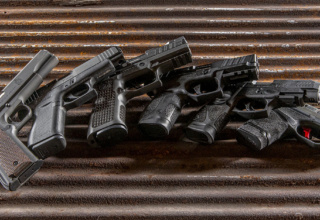If you favor a big gun but don’t want to leave it at home, here are some carry tips to consider
by Robb Manning
In my last concealed carry article, I answered the question, “Is smaller always better?” when making a choice in concealed carry handguns. If the only thing that you are accustomed to concealing is a sub- or micro-compact handgun, the thought of concealing a larger handgun can be daunting. But it needn’t be.
There are a couple of ways you can help mitigate the potential problems of carrying a larger handgun. First, the gear that you use, and second, your behavior.
The very first thing to consider falls into both categories — a little bit gear and a little bit behavior.
Ask yourself, if your intent is concealed carry, is it really concealed carry if your handgun is concealed but your clothes scream, “I’m tacticool and have a gun!”
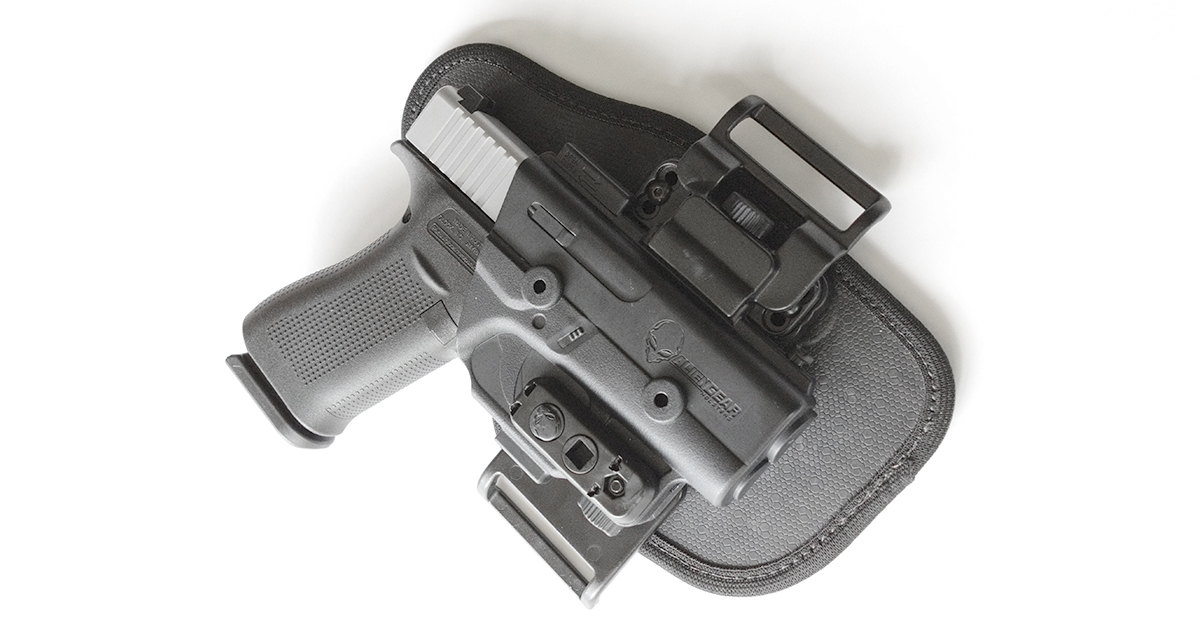
The first step in concealed carry is to blend in and not look like you’re carrying a gun. It doesn’t mean you have to dress like everyone else, just don’t dress in a manner that gives away that you carry a gun. If your jam is wearing tropical print shirts, that’s fine. But don’t wear a tropical print shirt with tactical pants, tactical boots, tactical carry vest, and a boonie cover. (Yes, I’ve seen it.) As an example, I used to like wearing vests with pockets, like a photographer vest or fishing vests. But once they became popular in the concealed carry crowd and earned themselves the nickname, “shoot me first vest,” I stopped wearing them.
If you want to look tacticool, and refuse to blend in, then don’t even bother with concealed carry; You might as well open carry.
GEAR
The first way to mitigate the potential problems of carrying a larger handgun is to use proper gear, which includes: holster, belt, cover garment (shirt), and pants.

Holsters are an important factor in proper concealed carry, if not the most important factor. You want the gun as close to your body as possible, but still be able to get your thumb between you and the grip quickly. Generally, the first option that people consider is the inside-the-waistband (IWB) holster. Since it positions the handgun between the pants and the shooter, it doesn’t get any closer to the body than this. But, since there’s a gun digging into your side, it’s not very comfortable. I carry all day and almost every day, and what feels like a hard metal handgun in the morning feels more like a hard cinderblock by the end of the day. Which is why I carry outside-the-waistband (OWB).
I like the look, feel, and smell of leather, but for speed, Kydex is king. I prefer holsters that allow the belt to slide through because it keeps the gun tight to the body. I don’t like paddle holsters for concealed carry. For me, these position the gun too far from the body, which is harder to conceal, and I feel like the gun bounces when I walk.
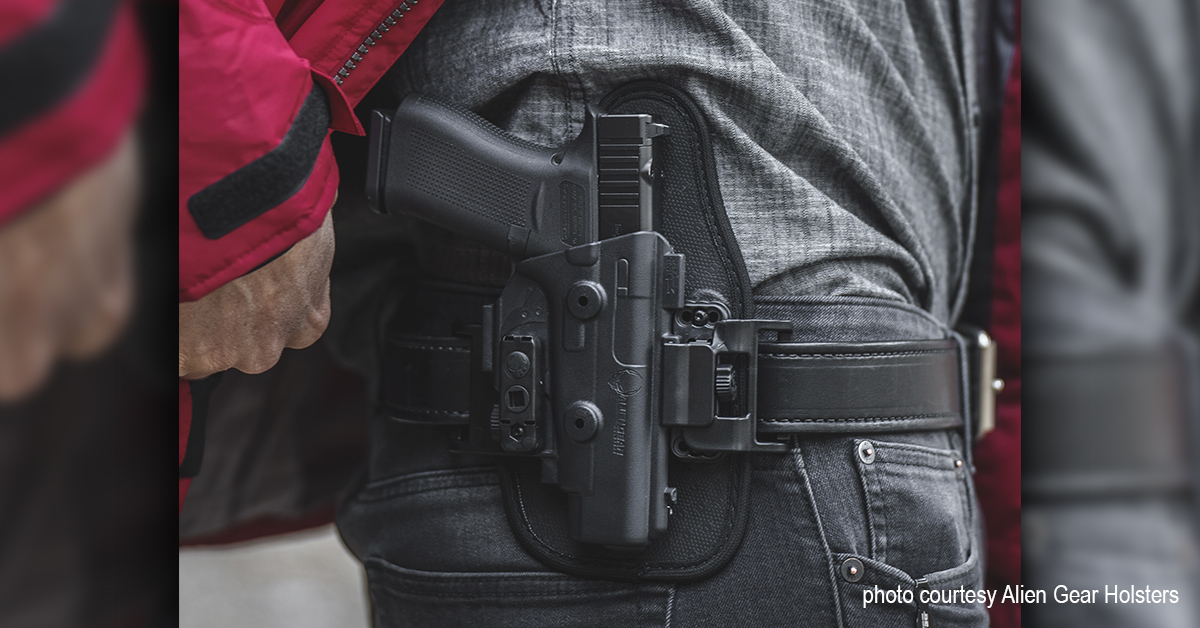
Speaking of bouncing, when I first started carrying concealed and knew little about it, I opted for a cheap $20 neoprene holster. Those work okay for IWB carry, but I’ve seen people use them for OWB, and their gun can be seen bouncing a mile away. Don’t use holsters made with stretchy materials for OWB. It should be rigid.
I don’t want to drop a lot of brand names, because everyone’s personal preference is different, but in a field loaded with outstanding holsters, my absolute favorite is from Alien Gear Holsters — the ShapeShift OWB Slide Holster. It’s a hybrid of Kydex and neoprene, with a Kydex half-shell mounted to a semi-rigid neoprene/polymer backing. It has all the benefits Kydex (draw speed, retention) but since only the neoprene touches the skin, it is super comfortable. The neoprene/polymer backing is slightly larger than the gun silhouette, so no part of the gun contacts the skin. On a winter day, neoprene touching your skin is better than frozen steel or cold polymer.
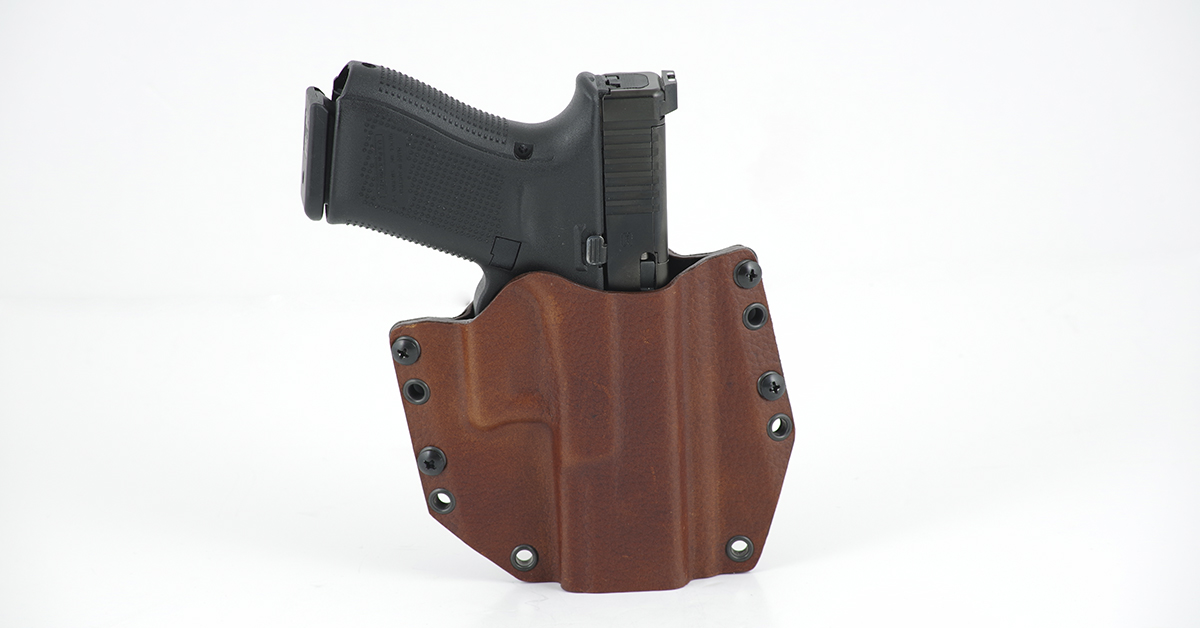
Holsters can also affect how long a cover garment you need to wear (which we discuss later). Some holsters ride higher than others. A holster that rides low on the belt will need a longer shirt to make sure the muzzle is covered.
Belts aren’t as big of a factor if you carry IWB. It’s still important, but not as important. If you carry OWB, though, it’s extremely important.
A good gun belt is stiff, sturdy, and is likely going to be twice as thick as a regular non-gun belt that the average person wears. It should hold your gun in place as you move. A good gun belt is stiff so that the weight of the gun doesn’t cause it to fold over on itself. When you walk with a regular or flimsy belt, the gun will bounce on your hip. A good analogy for the gun belt: If you want to mount a nice scope (the handgun) on a rifle (you), you don’t choose a flimsy $10 mount (the belt).
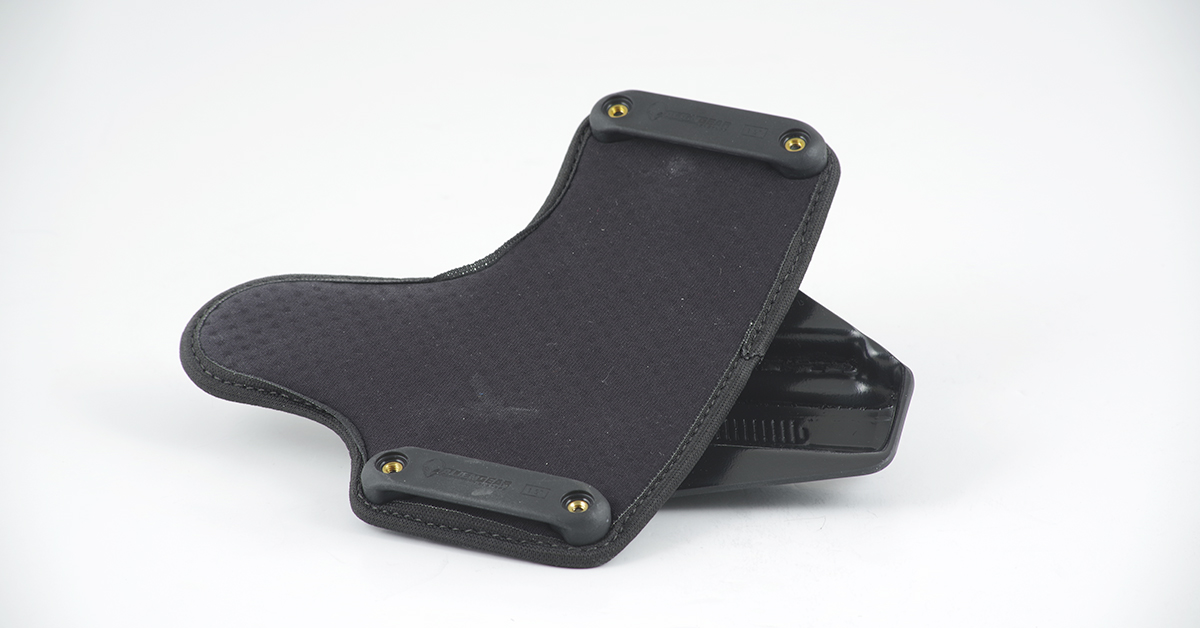
Belts come in leather or synthetic materials. Synthetic materials work well, but definitely have a “tactical” look to them. Leather belts work well and look like a normal belt, but they do stretch over time. They usually have two layers, and sometimes three, to make them stiffer and prevent stretching. Some manufacturers place an insert between layers for extra rigidity. Magpul makes a hybrid that is semi-rigid polymer stitched to an outer layer made of bull hide.
Once you have a good holster and belt, test them out in front of the mirror. You should be able to jump up and down and the gun should stay relatively in place.
The choice of shirt is another important factor to consider. Be wary of thin fabrics like silk because the gun will print, making it obvious that you’re carrying. Also, avoid fabrics that can be translucent when wet and in certain light, like linen. Patterns, like plaid, help break up the outline of the handgun, as well as more random designs like tropical shirts. I’m a fan of plaid button-up summer shirts and in the winter, plaid flannel long sleeve shirts.
If you have a T-shirt as a base layer with an unbuttoned shirt as a cover garment, be cautious of sudden gusts of wind that can reveal your gun for everyone to see.

Some shirts designed specifically for concealed carry have magnets for fasteners instead of buttons. My personal experience is that this is not a good idea. I was once walking through a very busy parking lot and happened to be wearing one of these magnet shirts. The parking lot was so packed that I had to do the side-shuffle between an ill-parked mini-van and SUV. As I was doing the side-shuffle, I got a little too close to the mini-van, and the magnet buttons decided they liked car metal better than each other, and my shirt shot open like I was a flasher. Fortunately, no one was in the vehicle, as I’m sure I would have had some explaining to do. This is why I don’t wear shirts with magnetic fasteners.
Make sure the shirt covers the muzzle of your holstered firearm, especially if you’re carrying a larger one.
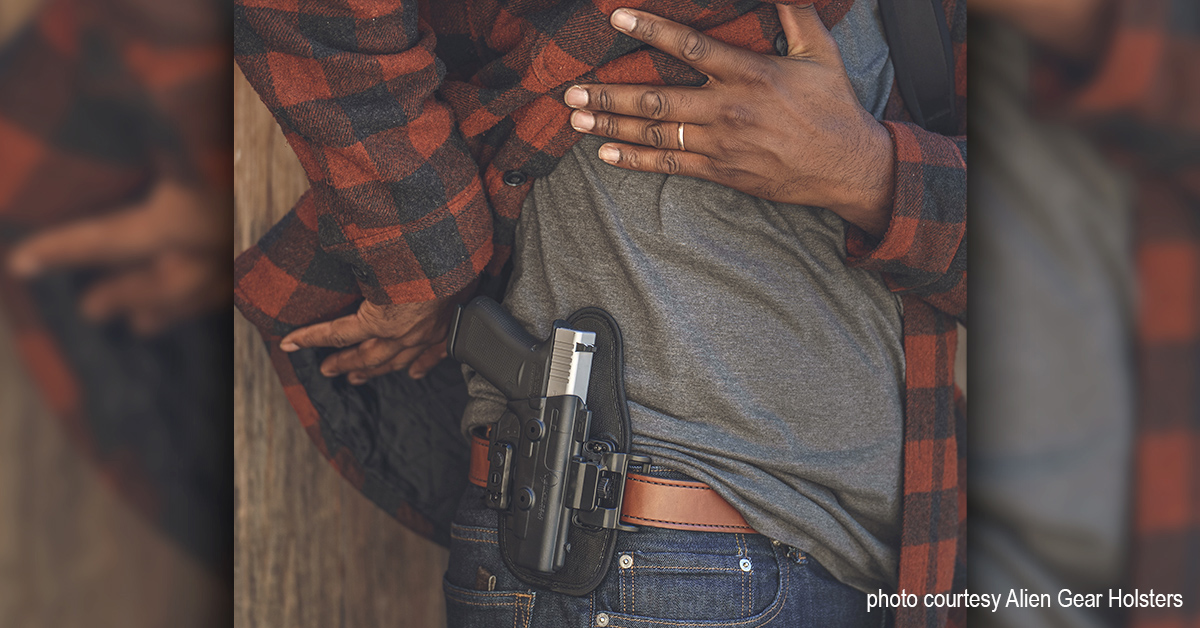
Pants aren’t a huge factor, but keep in mind if you choose IWB carry, you might need to go up a size or two, which means you’ll need to juggle pant sizes; the ones you wear when you carry and the ones you wear when you don’t. Or get pants with a stretchy waist. For everyday use, it’s best to use normal pants — jeans, casual, hiking, et cetera — and avoid tactical pants, unless you’re going to the range or training.
BEHAVIOR
The second way to mitigate the faults of carrying a larger handgun is by modifying your behavior. Most people have more habits than they realize, and often do things without thinking. You can’t afford to do that when carrying a handgun, especially in states where exposing a handgun, even unintentionally, is considered “brandishing a weapon” and is against the law.
Here are a few ways you can modify your behavior. (Note: When I use the term “strong side” of your body, that’s the side in which you wear your firearm. “Weak side” is the side that you don’t.)
When shopping in a store, don’t use your strong side arm to reach for products on high shelves. Your shirt will lift and expose your firearm.
In crowded areas or situations where someone could bump against you, be cognizant that your handgun is on your side. In those situations, I try to keep my strong side arm straight and down along my side to guard against someone bumping against me. If you’re shuffling past someone to get through a tight space, lead with your weak side as it’s more likely to get bumped.
Be cautious (or avoid altogether) when hugging in public. Sometimes, the most likely times to break concealment are when doing things we don’t do very often. Since we don’t do them often, we sometimes forget to guard against them when carrying. A scenario could be that you and your spouse are out in public and run into another couple that you haven’t seen in a while, and everyone trades hugs. You have a large, metal object on your side and someone is likely to feel it. In public, I must be careful of hugging even my wife. I’ve been carrying for a long, long time. And my wife knows good and well that I carry. It never fails, though, every time I’m carrying and we hug, she bumps my gun with her arm and she gives a verbal and physical startle response. Not a big deal in home, but it could be a problem in public.
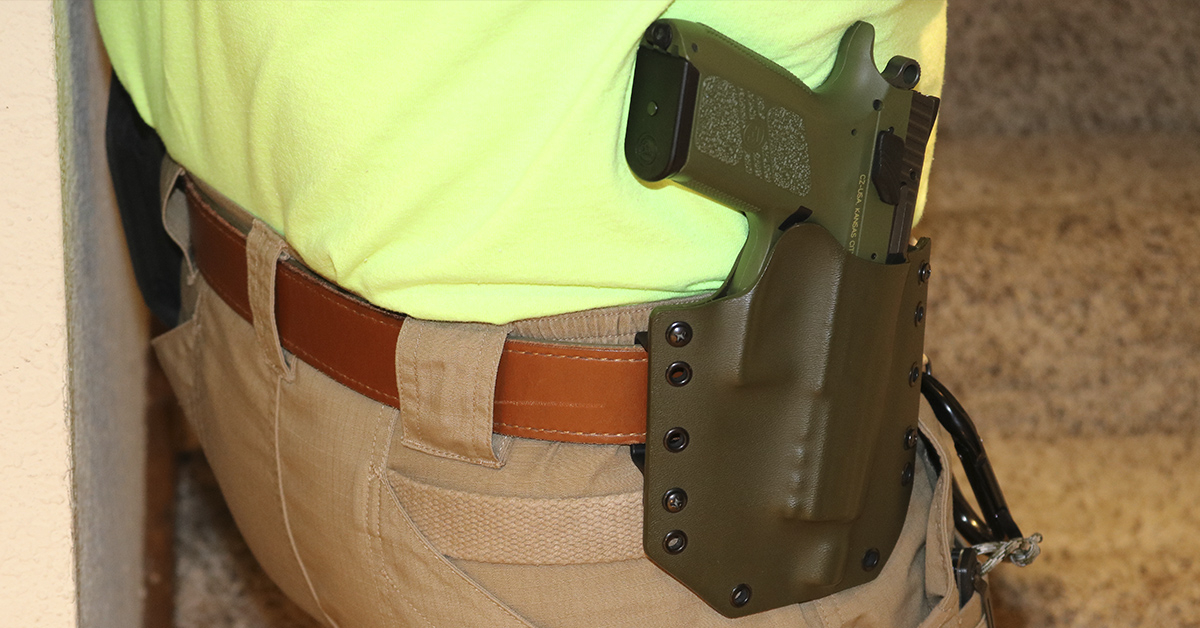
Also, when applicable, I’ll generally use my body to shield my gun from view by positioning my strong side away from others, like when sitting in a restaurant booth or in a row of chairs.
FINAL THOUGHTS
It’s not at all difficult to conceal a full-size handgun. It just takes just a few extra steps — some of which you are probably already doing if you’re carrying a smaller handgun. All it requires is proper gear and attire, and being mindful of how you act in public.
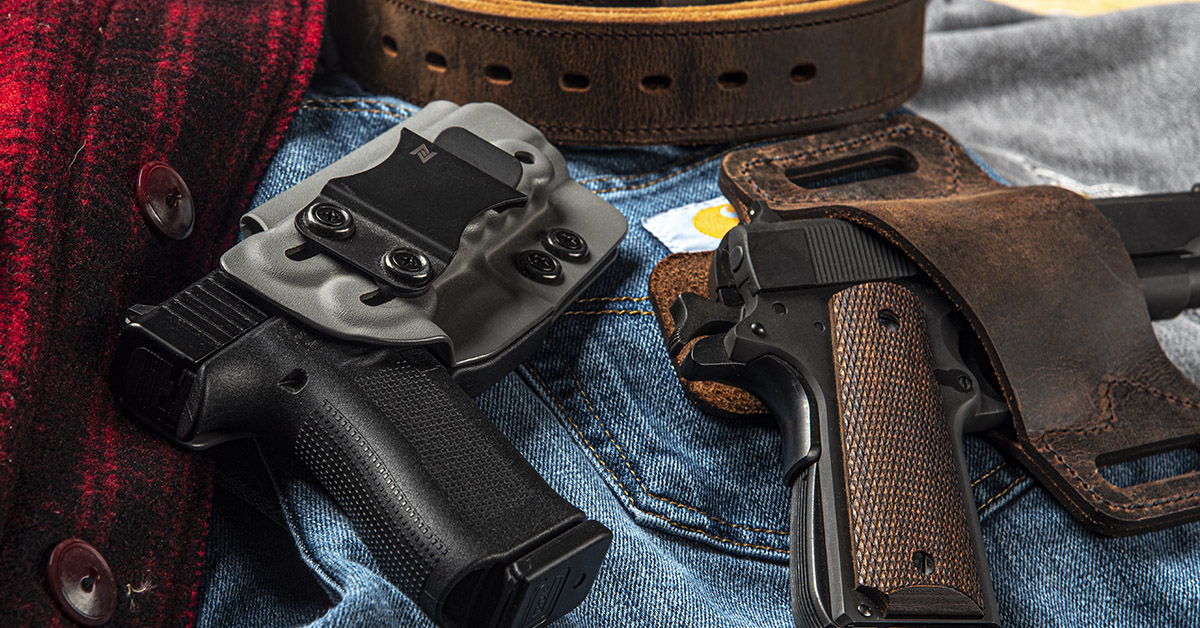
The most important thing is the most obvious: keep your carry gun concealed. I’ve seen people open carry in public, and I’ve seen people that are carrying concealed do something in a store to expose their gun to others around them. The reaction of others from a concealed gun being exposed is more pronounced than the reaction when a person is open carrying. A person that is open carrying is telling everyone, “I have a gun, and I’m not hiding anything,” and most people are OK with that. But a concealed gun that is suddenly and unintentionally exposed raises all sorts of questions in people’s mind. It’s like walking up on a snake you saw 50 feet away versus not seeing the snake until you almost step on it. It can be startling, at least until you figure out what kind of snake it is.
- TESTED: Beretta PMXs 9mm Pistol - July 26, 2024
- The Correct Way to Clean a GLOCK - January 15, 2024
- Concealed Carry Guns: How Important is Ergonomics? - December 11, 2023


